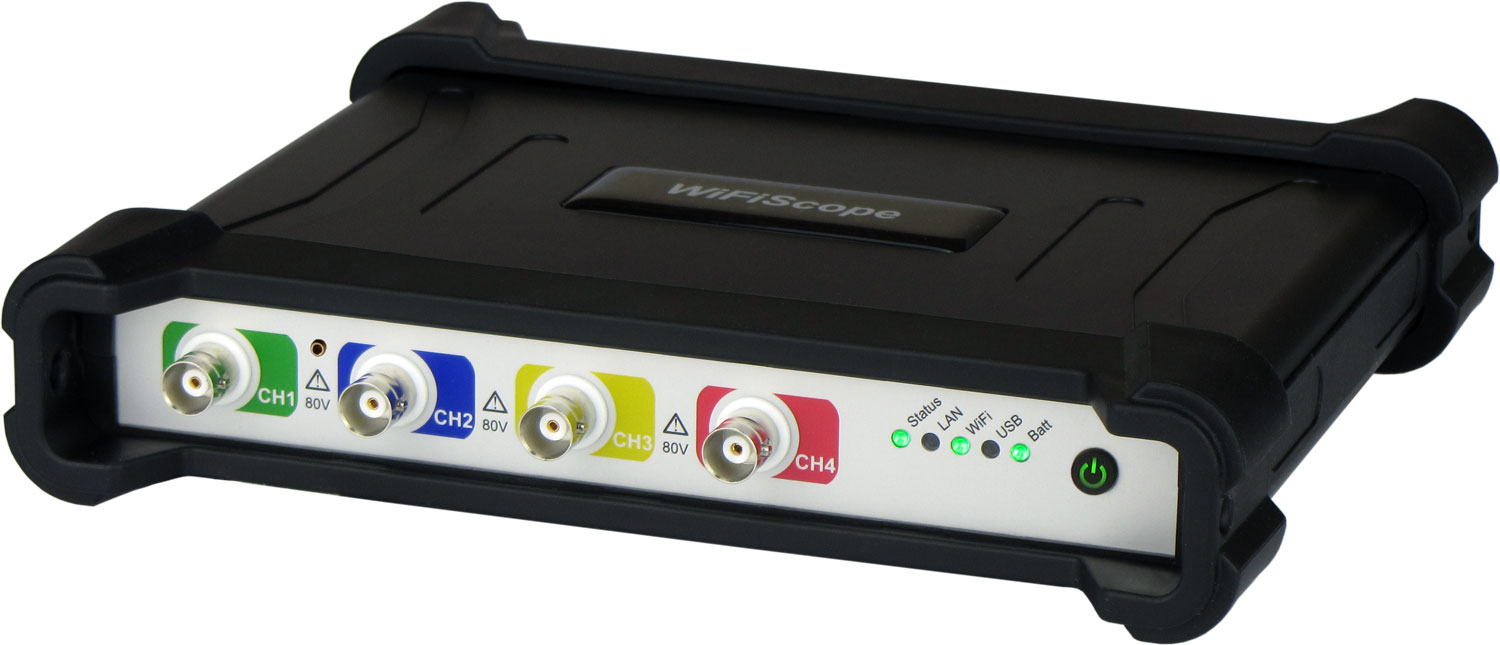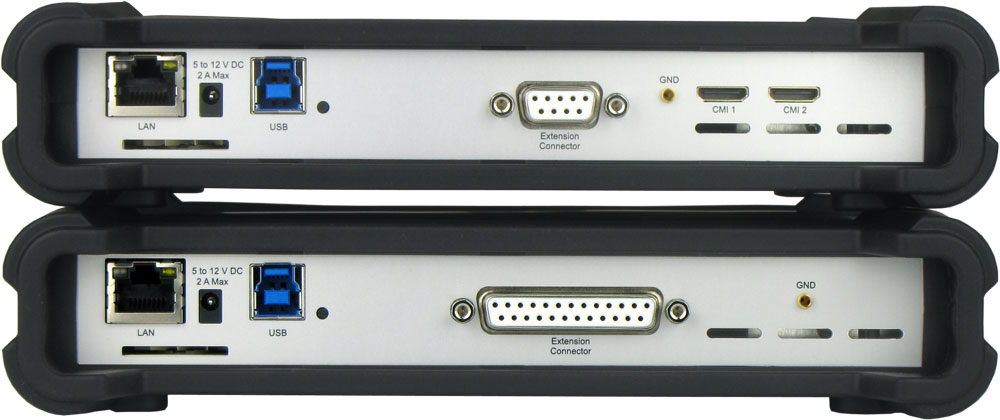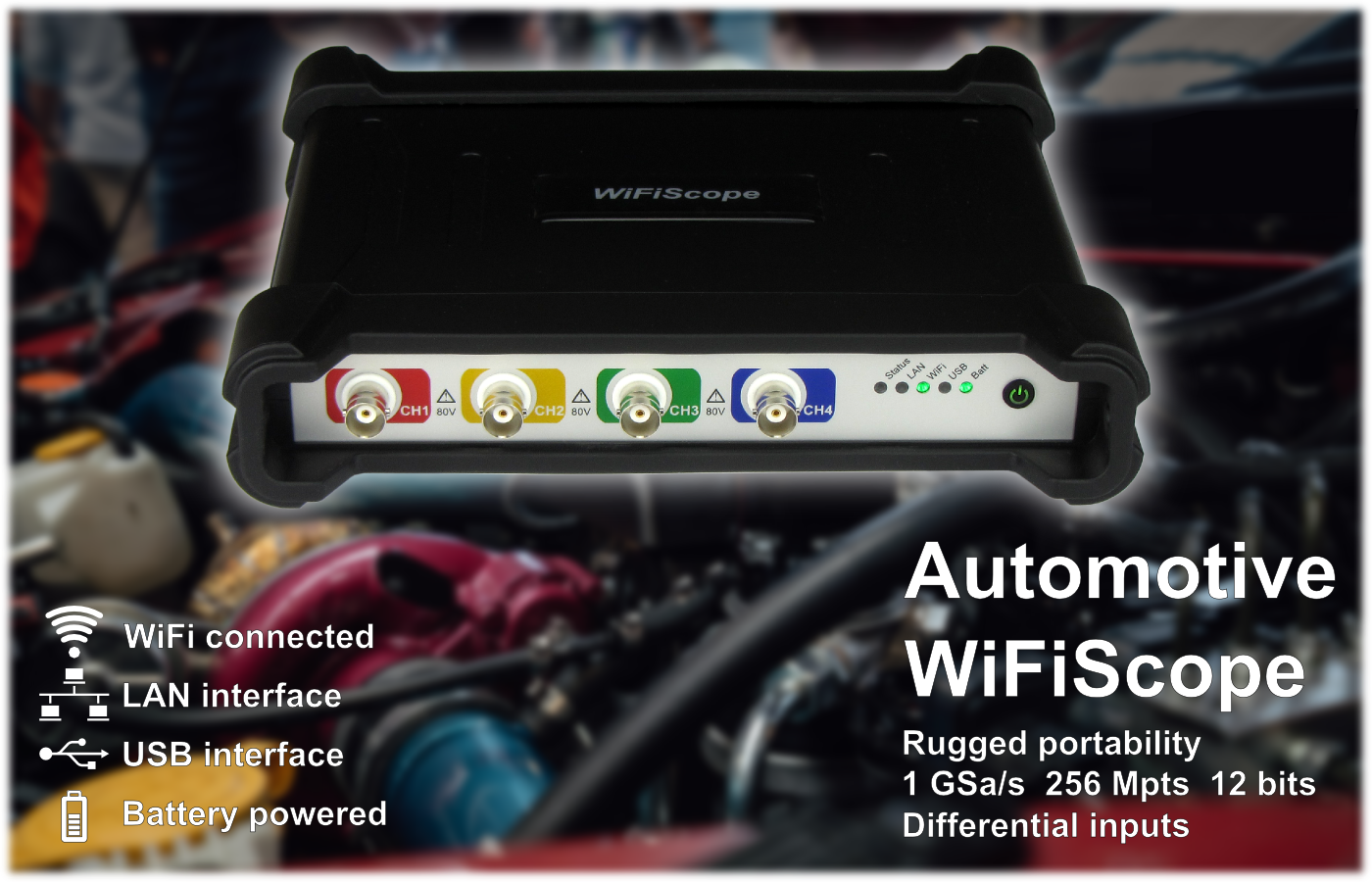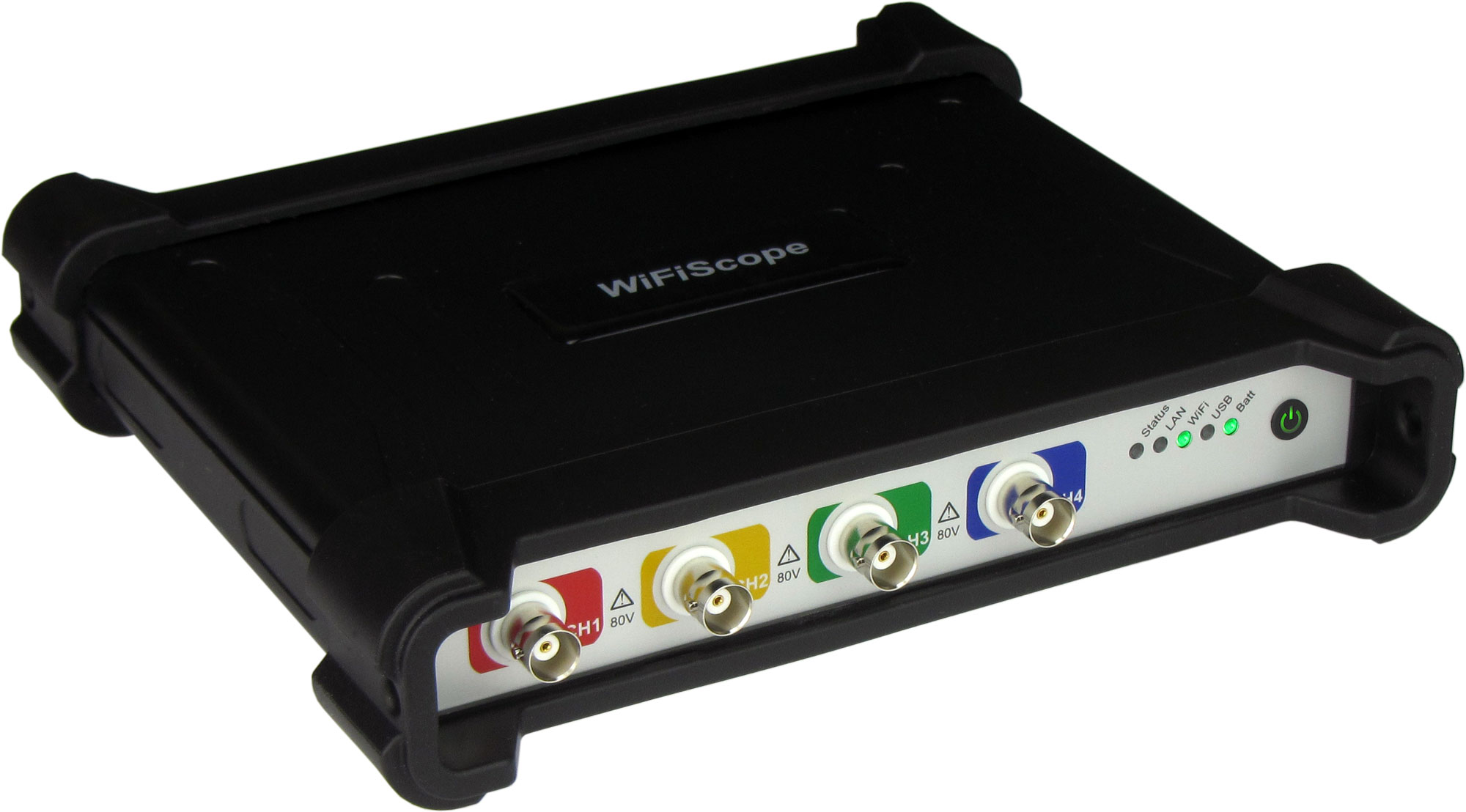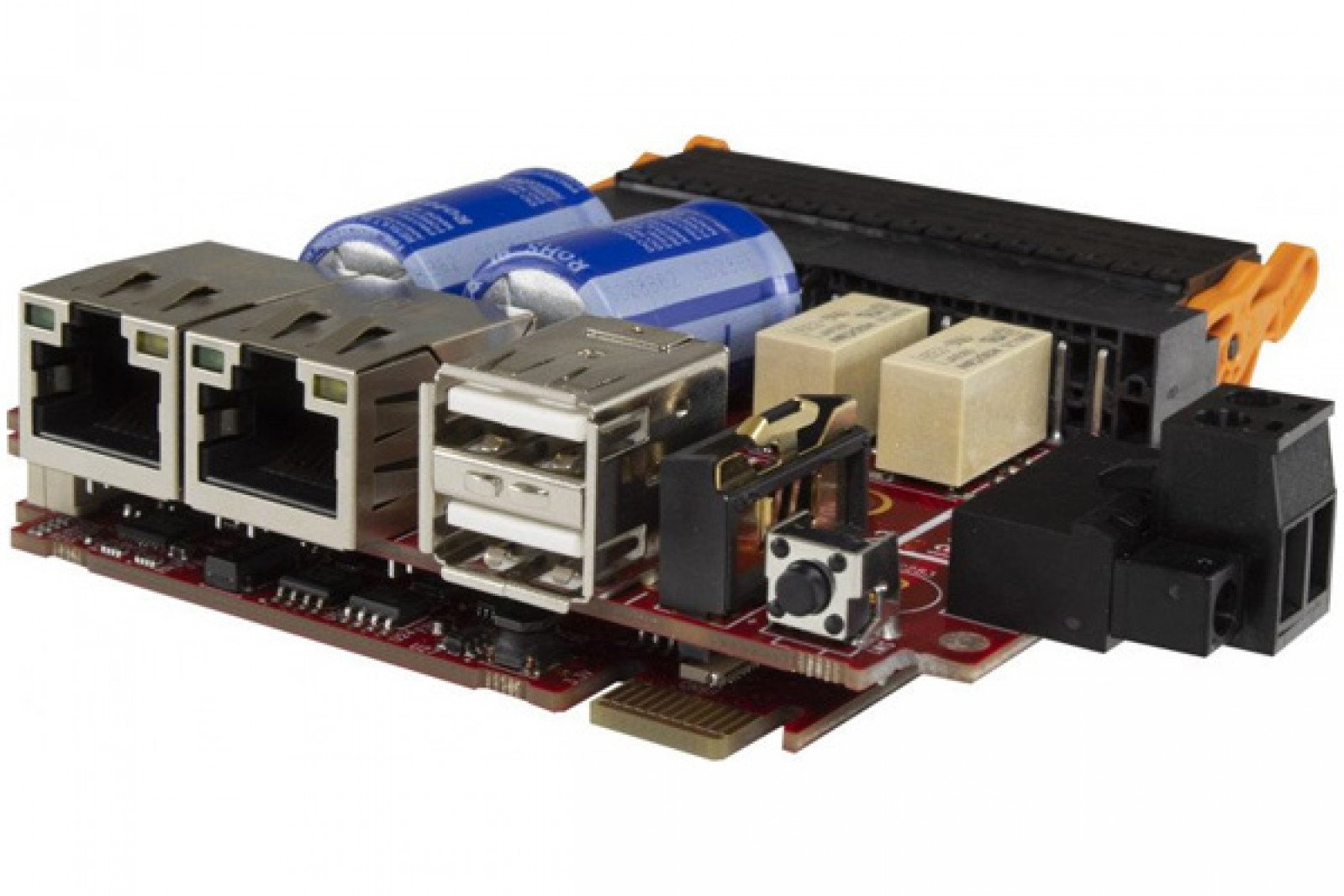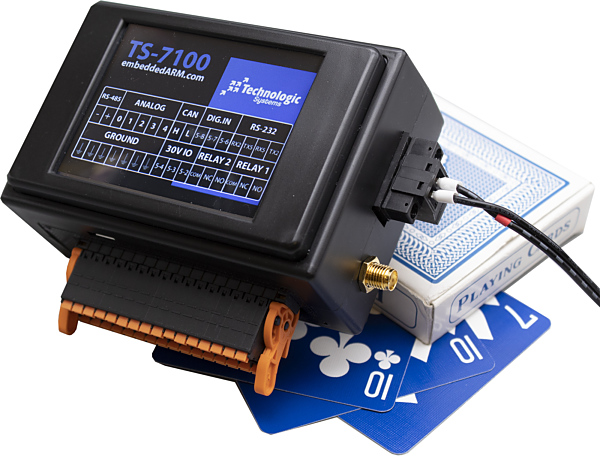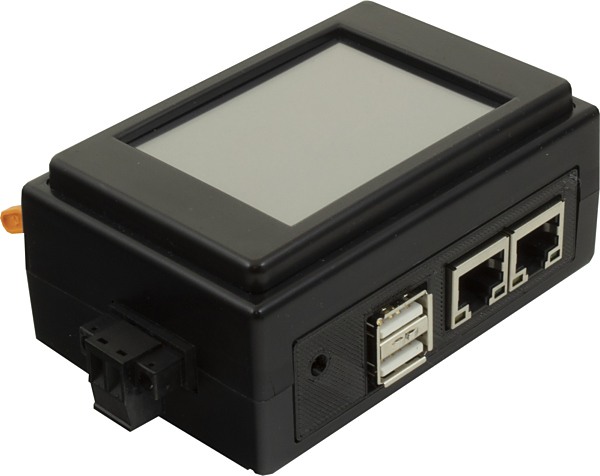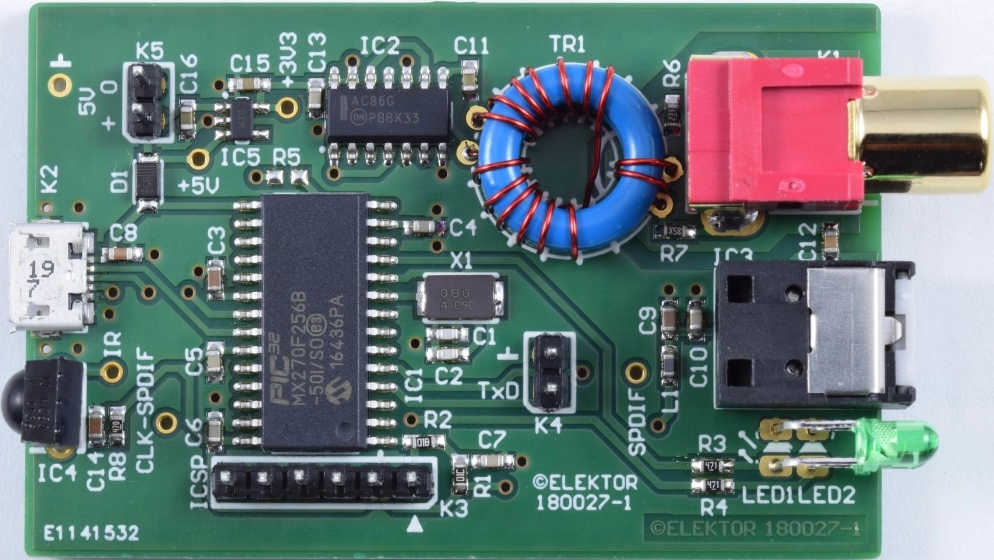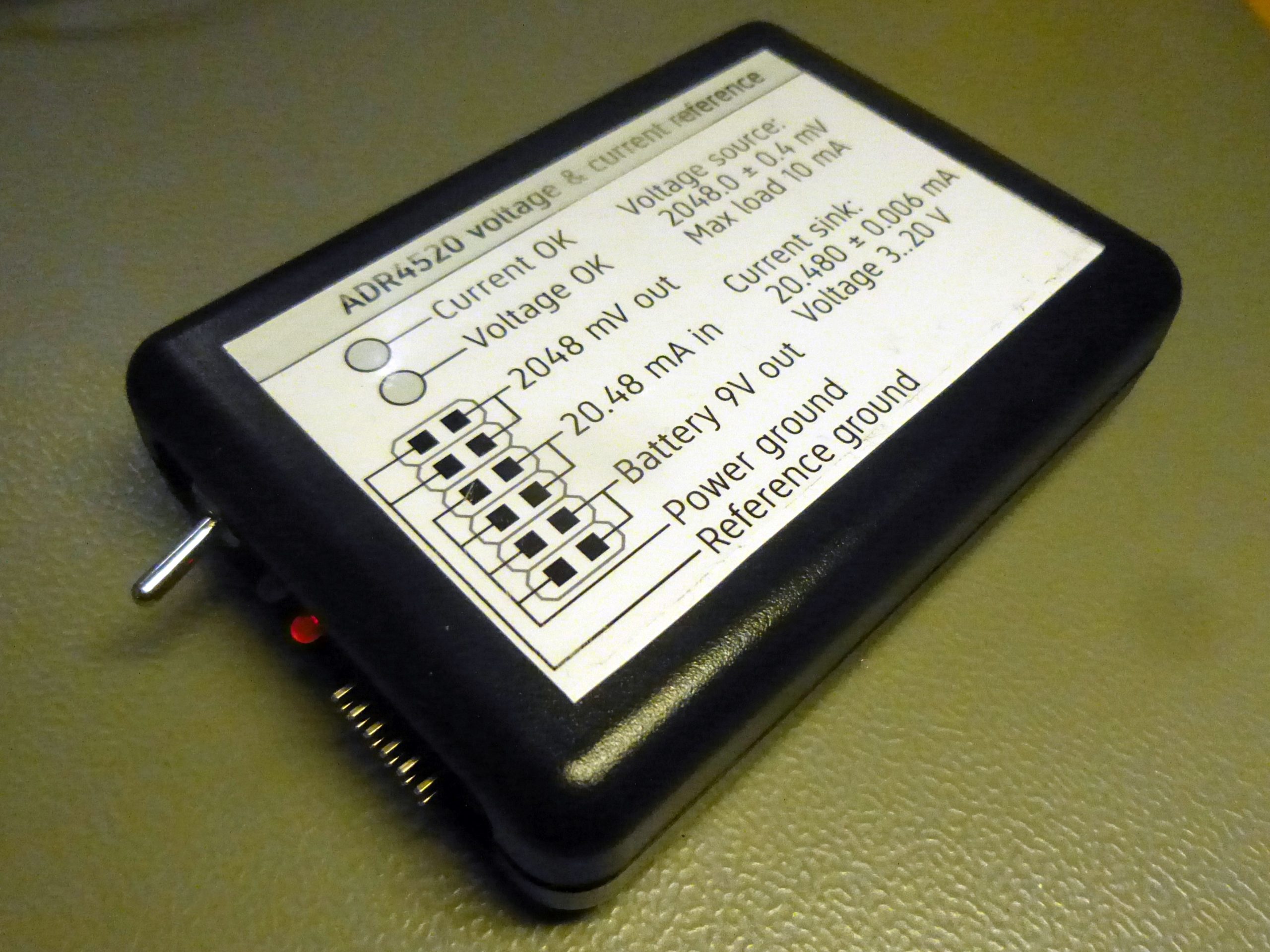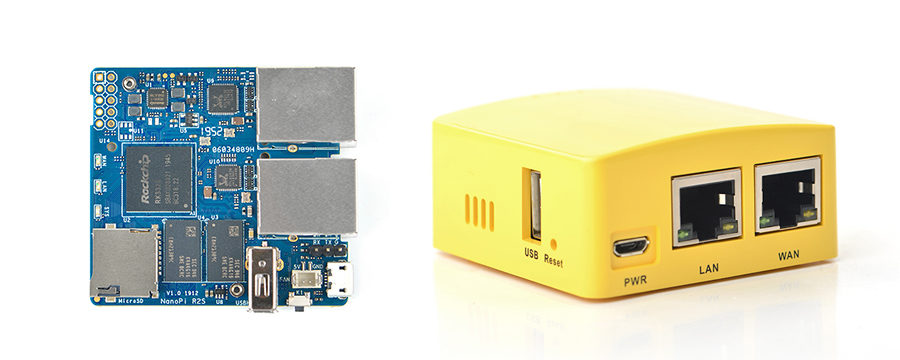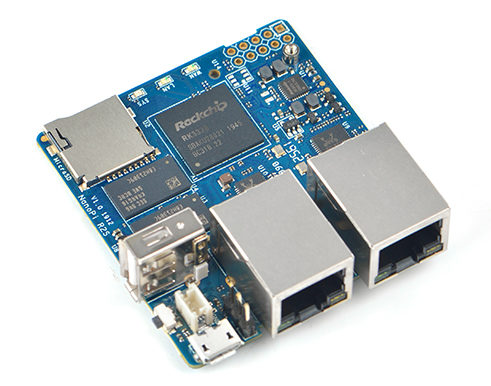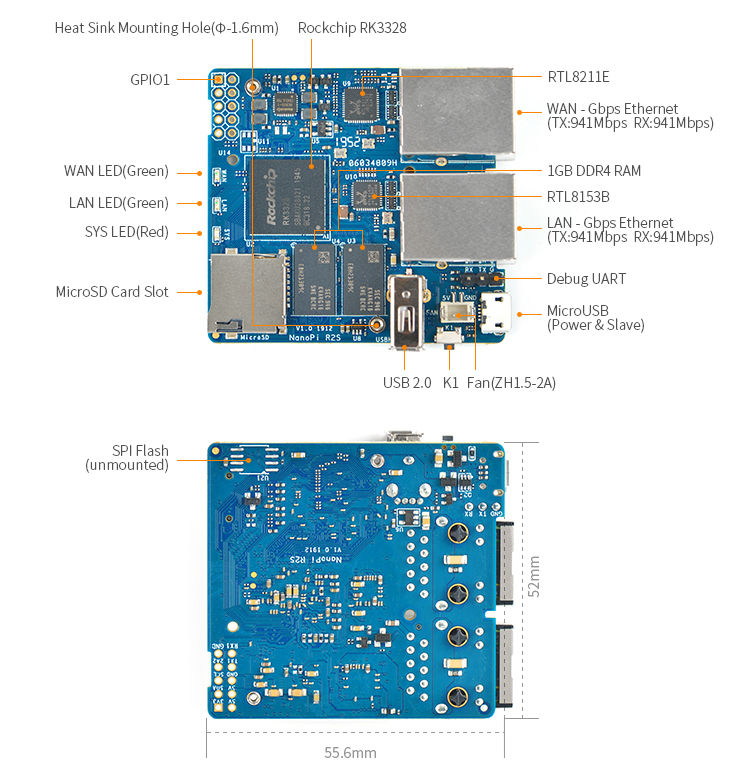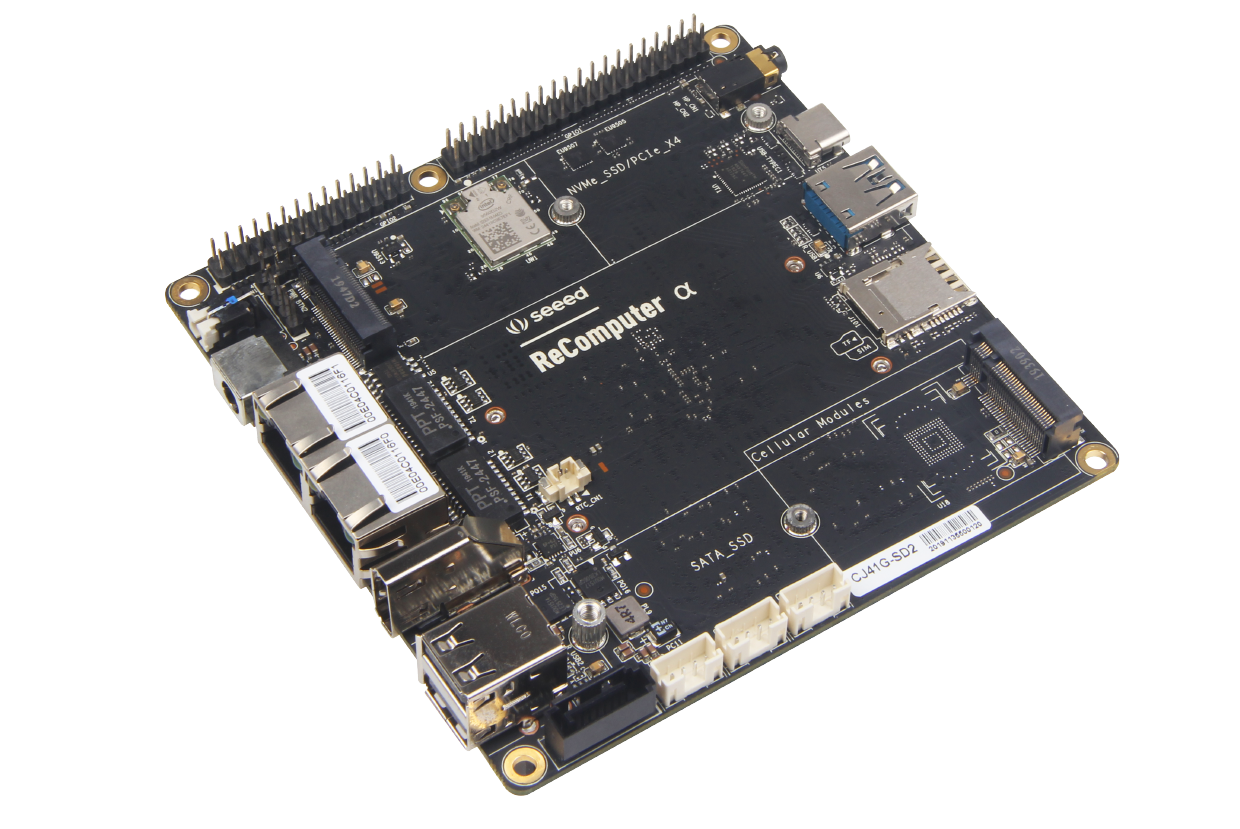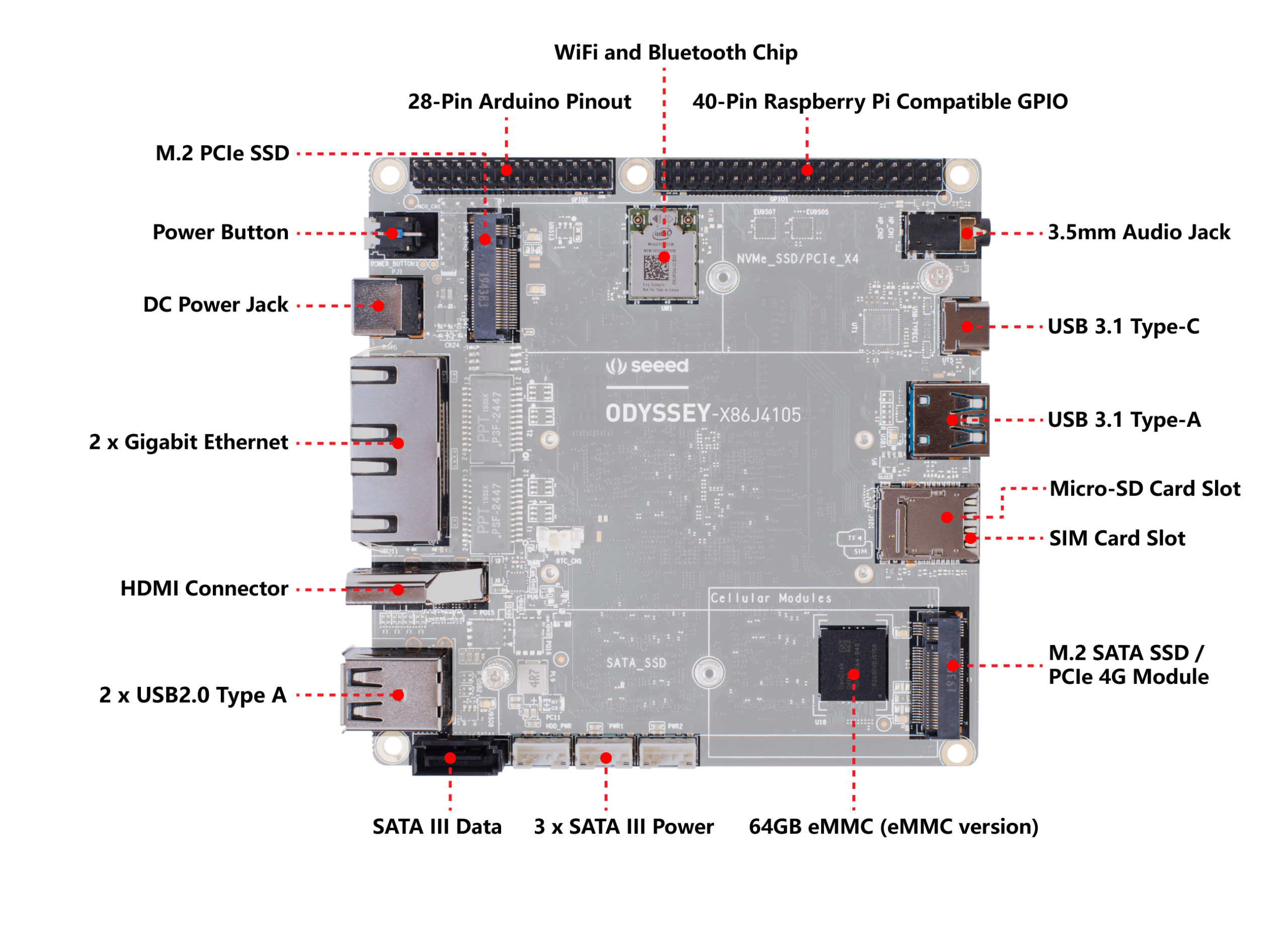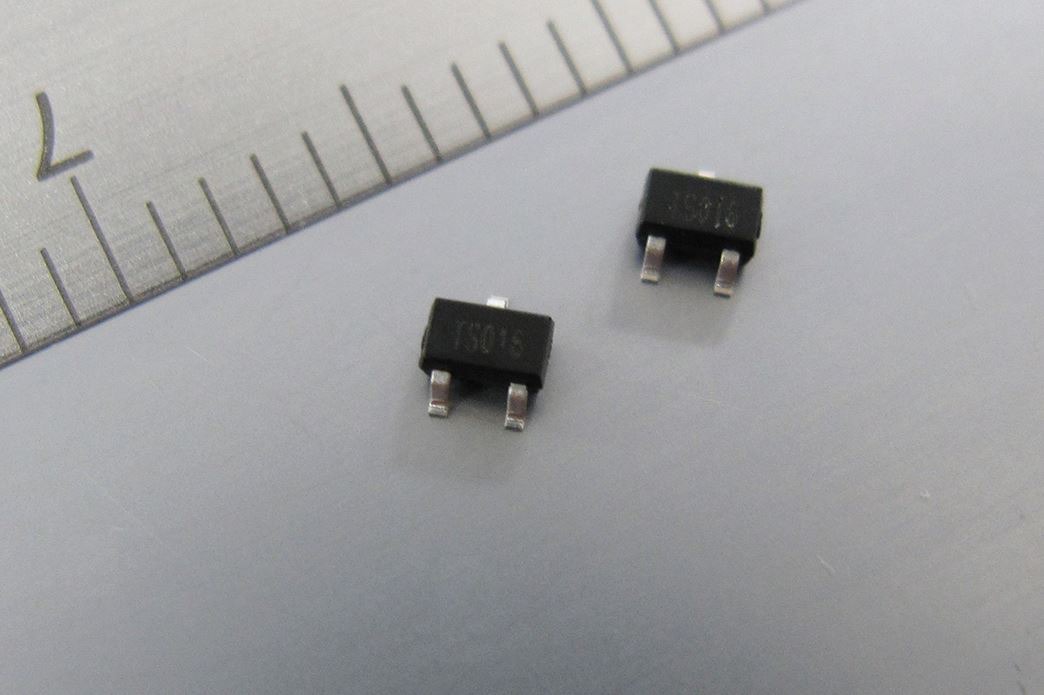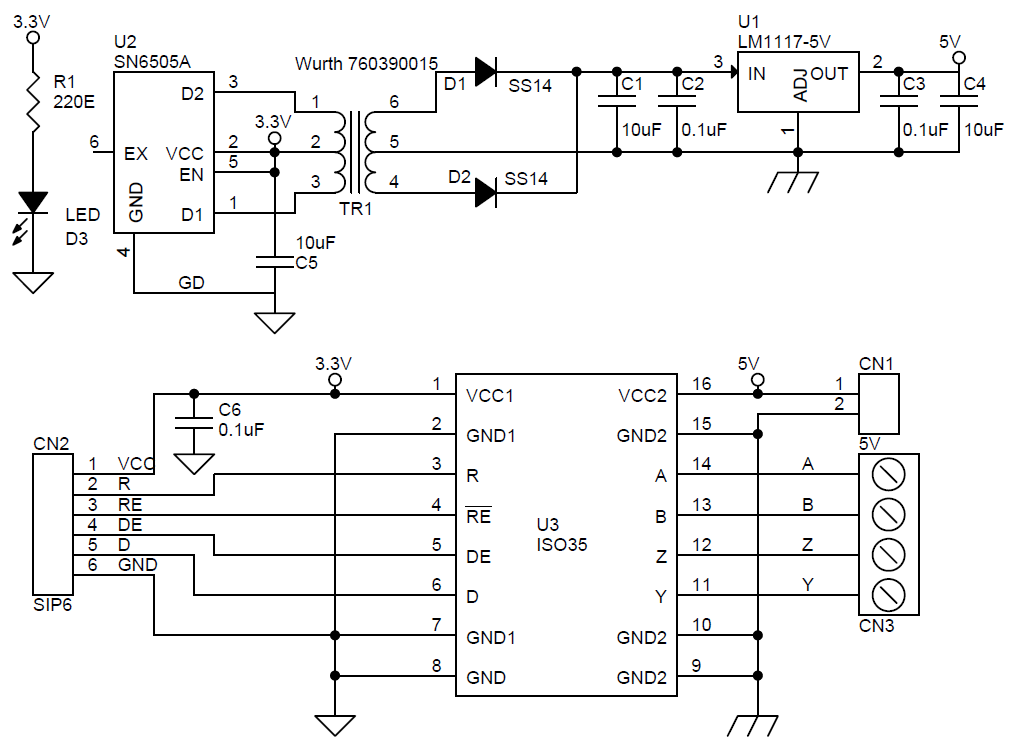TiePie engineering has introduced two new members of the powerful high resolution WiFiScope series oscilloscopes, the WiFiScope WS6 DIFF and WiFiScope WS4 DIFF.
These new differential WiFi oscilloscopes ar eevery day oscilloscopes built by engineers for engineers and can be used via an ethernet connection (LAN, WiFi or WAN) but also still with a USB 2.0 / 3.0 connection. The built-in battery gives the WiFiScope the possibility to perform fully wireless differential measurements. Measurements can then be performed completely galvanically isolated, and over long distances. This wireless PC based data acquisition instrument offers the user more possibilities for measurement applications.
With a WAN connection, world wide differential measurements can be performed. Specific knowledge on networks is not required. The Multi Channel software gives an overview of the available USB instruments and network instruments. Simply tick the instrument and measuring can start.
The differential WiFi oscilloscope has the following advantages:
- fully wireless differential measurements via WiFi are performed (galvanically isolated) because of the built-in battery
- mobile differential measurements are possible, e.g. on transport systems and moving installations
- LAN and WAN data acquisition is available for long distance differential measurements
- continuous real time high speed data acquisition over both WiFi and LAN/WAN are available
- USB differential measurements for stand-alone applications and high speed data acquisition up to 200 MSa/s
The WiFiScope is so transparent that it appears that the ethernet connected instrument is connected directly to the computer. All hardware and software functions of the oscilloscope, spectrum analyzer, data logger and voltmeter remain available via the network. Specific network knowledge is not required.
Again the TiePie engineering motto applies: Plug in and measure!
To reduce PC-based data acquisition installation costs and increase flexibility, WiFi and LAN / WAN measuring instruments are the solution. Differential measurement applications that were previously not possible, for example long-distance measurements, measurements at unsafe or noisy places, measurements at a moving installation or reading instruments at different places are now available. With the new differential WiFi oscilloscopes from TiePie engineering, reliable WiFi and LAN / WAN measurement solutions can now be obtained without compromising measurement quality.
The differential WiFi oscilloscope can now be used where previously it was difficult to place a complete measurement setup. Thanks to the WiFi connections, electrical, physical, mechanical and acoustic signals can now be measured remotely. With the WiFi oscilloscope, high speed real time continuous data acquisition rates of 5 MSamples / second can be achieved with a resolution of 8 to 16 bits and, via LAN / WAN connections, high speed real time continuous data acquisition rates of 20 MSamples / second can be achieved with a resolution of 8-16 bits. Via USB connections, high speed real time continuous data acquisition rates of 200 MSamples / second can be achieved with a resolution of 8-16 bits.
Software
Combined with the free Multi Channel oscilloscope software, the WiFiScope WS4 DIFF and WiFiScope WS6 DIFF turn your PC into an High Resolution differential Oscilloscope, Precision Spectrum analyzer, EMI Pre compliance analyzer, High Performance Multimeter, Very Fast differential Data logger and Comprehensive Protocol Analyzer. The Multi Channel oscilloscope software gives you the opportunity to share your data with everybody and lets you analyze your data without the need of an instrument. The Multi Channel oscilloscope software offers sophisticated data analysis capabilities using many user configurable data processing I/O blocks, showing the analysis results in graphs, tables and/or meter displays. Time consuming complicated instrument setups are no longer required using the unique Quick Setup system: select the measurement task you want to accomplish with just up to 4 mouse clicks from a selection dialog that gives access to over 700 different instrument Quick Setups. Each Quick Setup contains all required instrument settings, as well as example signals and background information on how to connect the instrument.
Combined with the Multi Channel oscilloscope software, the WiFiScope WS6 DIFF and WiFiScope WS4 DIFF turn your PC into an High Resolution differential Oscilloscope, Precision Spectrum analyzer, High Performance Multimeter, Very Fast differential Data logger and Comprehensive Protocol Analyzer.
A full Software Development Kit (SDK) for writing your own PC-based data acquisition software is available, as well as examples in C, C++, C#, Python, Matlab, Node.js and Visual Basic.NET. Own written data acquisition software for the Handyscope HS4 DIFF and Handyscope HS6 DIFF can be used directly for the WiFiScope WS4 DIFF and WiFiScope WS6 DIFF. Developing the software for a USB data acquisition system or a wireless high speed WiFi data acquisition system makes no difference and the developed software can be used transparently.
TiePie engineering now offers two new differential WiFi network oscilloscopes.
For full details on the new TiePie engineering differential WiFiScopes, visit www.tiepie.com/wifiscope



